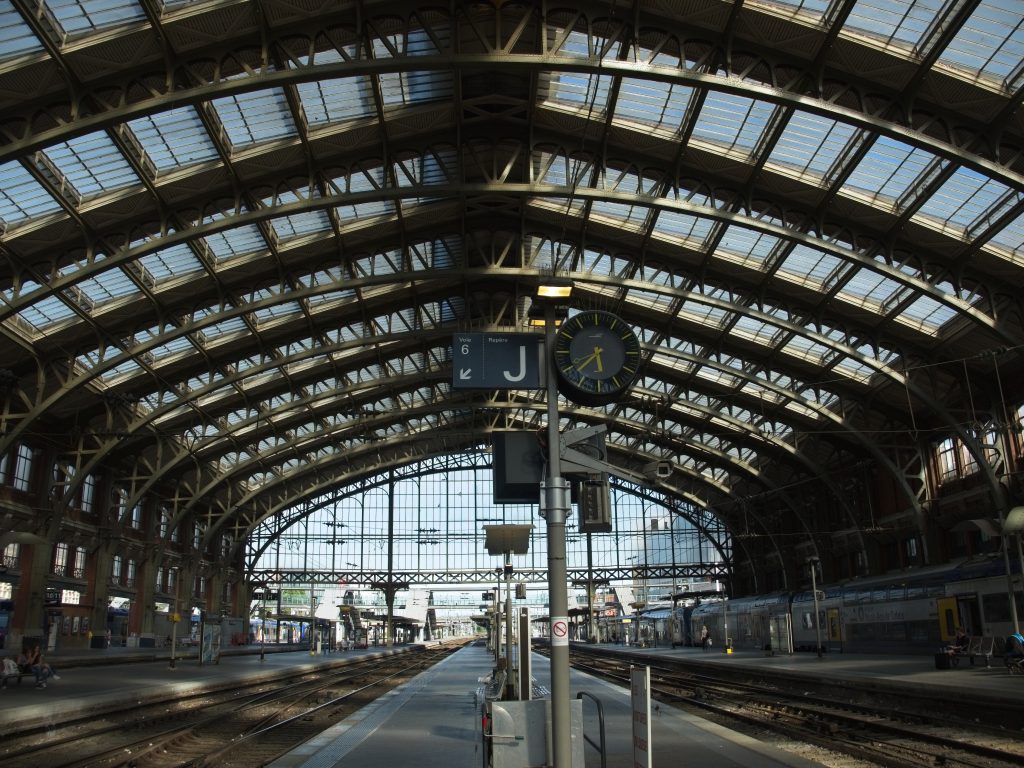Imagine traveling at incredible speeds, gliding effortlessly along tracks without any wheels touching the ground. This is the promise of Magnetic Levitation (MagLev) trains, a revolutionary technology that could reshape the future of transportation. By utilizing powerful electromagnets to suspend and propel trains above the tracks, MagLev trains offer numerous advantages over traditional trains, such as reduced friction, increased energy efficiency, and the potential for much faster travel times. In this article, we will explore the exciting possibilities and potential impact of MagLev trains on the way we commute and connect cities in the coming years. Get ready to embark on a thrilling journey into the future of transportation.

1. Introduction
Welcome to the world of magnetic levitation (MagLev) technology! In this article, we will explore the incredible potential of MagLev trains and how they are reshaping the transportation industry. From their innovative design to their numerous advantages, MagLev trains offer a glimpse into the future of faster, safer, and more environmentally-friendly travel. Let’s delve into the world of MagLev technology and discover why it holds such promise for transforming transportation as we know it.
2. What is Magnetic Levitation (MagLev) Technology?
2.1 Definition
Magnetic levitation, commonly known as MagLev, is a technology that allows objects to float, or levitate, using magnetic fields. In the context of transportation, MagLev technology refers to the use of magnetic forces to propel and suspend trains above their tracks, eliminating the need for traditional wheels and rails. This revolutionary approach to train propulsion has captured the imagination of engineers and transportation enthusiasts worldwide.
2.2 How does MagLev Technology Work?
MagLev trains operate on a principle of electromagnetic suspension. The trains are equipped with powerful magnets, which are placed on the underside of the train and repel against magnets on the track. This repulsion creates a cushion of air, effectively lifting the train and minimizing friction with the track. To propel the train forward, additional magnets on the track are used to create a magnetic field that pulls the train forward. By harnessing the power of magnetic forces, MagLev trains can achieve remarkable speeds and efficiency.
2.3 Advantages of MagLev Technology
MagLev technology offers numerous advantages over traditional train systems. Firstly, the absence of wheels and rails reduces friction, allowing for higher speeds and reduced travel time. Secondly, MagLev trains have the potential for increased safety since they are not prone to derailment or wheel-related accidents. Additionally, MagLev trains are energy-efficient, as the absence of physical contact between the train and the track reduces energy losses due to friction. Moreover, the minimal noise and vibration levels of MagLev trains enhance passenger comfort.
2.4 Current Applications of MagLev Technology
While MagLev technology is still in its early stages of development, there are several notable applications already in operation. The Shanghai MagLev Train in China, for instance, is one of the most prominent commercial MagLev train lines, connecting Shanghai Pudong International Airport to the city’s outskirts. It achieves a top speed of 431 km/h (268 mph), offering passengers a swift and convenient mode of transportation. Another example is the Yamanashi MagLev Test Track in Japan, which serves as a testing ground for the country’s ambitious plans to implement MagLev technology in their future high-speed train network. These real-world applications demonstrate the feasibility and potential of MagLev technology on a larger scale.
3. The Promise of MagLev Trains
3.1 Faster Speeds and Reduced Travel Time
One of the most compelling aspects of MagLev trains is their ability to reach unprecedented speeds. The absence of traditional wheels and tracks allows MagLev trains to achieve speeds far beyond what conventional trains can achieve. With speeds exceeding 400 km/h (250 mph) already demonstrated in certain MagLev train lines, the promise of reduced travel time is tantalizingly real. Imagine being able to travel between cities and countries faster than ever before, revolutionizing both personal and commercial travel.
3.2 Increased Safety
Traditional train systems are susceptible to accidents such as derailments, which can have devastating consequences. MagLev trains offer increased safety due to their reliance on magnetic forces for propulsion and suspension. The absence of physical contact between the train and the track greatly reduces the risk of derailment, ensuring a safer and more reliable mode of transport. This increased safety factor makes MagLev trains an attractive option for mass transit and long-distance travel.
3.3 Energy Efficiency and Environmental Benefits
As the world grapples with the need to reduce carbon emissions and combat climate change, MagLev trains offer a greener alternative to traditional train systems. The energy efficiency of MagLev technology arises from reduced friction and energy losses. By eliminating the need for physical contact between the train and the track, MagLev trains minimize energy consumption, resulting in lower carbon footprints. Additionally, the reduced noise and vibration levels of MagLev trains make them more environmentally friendly, reducing the negative impact on surrounding communities and ecosystems.
4. Challenges and Limitations
4.1 High Initial Costs
One of the significant challenges facing the widespread adoption of MagLev technology is the high initial costs associated with its implementation. The development and construction of MagLev infrastructure, including specialized tracks and stations, can be a costly endeavor. However, it is important to note that as the technology matures and becomes more widely adopted, economies of scale and technological advancements may contribute to cost reductions.
4.2 Infrastructure Requirements
Implementing MagLev technology requires a significant investment in infrastructure. MagLev tracks must be constructed with precision and utilize specialized materials to ensure smooth operations. Additionally, the maintenance and technological requirements of MagLev systems may present challenges for transportation authorities and operators. However, these infrastructure requirements can be viewed as a long-term investment in the future of transportation, which brings with it numerous benefits.
4.3 Magnetic Interference
MagLev trains rely on precise magnetic forces for their operation, making them susceptible to external magnetic interference. This interference can come from various sources, such as nearby power lines or other electromagnetic devices. As a result, careful planning and mitigation strategies must be in place to minimize the impact of magnetic interference on the performance and safety of MagLev trains.
4.4 Limited Adoption
Despite the promise and potential of MagLev technology, its adoption has been relatively limited thus far. The high costs and infrastructure requirements, coupled with the challenges of integrating MagLev systems into existing transportation networks, have hindered widespread implementation. However, ongoing research, development, and successful case studies provide hope for increased adoption in the future.

5. Case Studies and Success Stories
5.1 Shanghai MagLev Train, China
The Shanghai MagLev Train in China stands as a shining example of the successful implementation of MagLev technology. Since its inception in 2004, the train has transported millions of passengers between Shanghai Pudong International Airport and the city center. With a top speed of 431 km/h (268 mph), the Shanghai MagLev Train showcases the incredible speed potential of MagLev technology and its appeal for commuters and tourists alike.
5.2 Yamanashi MagLev Test Track, Japan
Japan has been at the forefront of MagLev technology, with the Yamanashi MagLev Test Track serving as a testament to their commitment to innovation. Built in 1997, the Yamanashi MagLev Test Track spans 18.4 kilometers (11.4 miles) and allows for experimentation and research into high-speed MagLev transportation. The track has been integral in advancing MagLev technology, as Japan works towards implementing a MagLev high-speed train network in the coming years.
5.3 The Floating Train, Germany
Germany has also made significant strides in MagLev technology, with the development of the Transrapid MagLev system, also known as the “floating train.” This system originated from research conducted by German engineers and has been successfully tested on a track in the northern part of the country. The floating train showcases the potential of MagLev technology for revolutionizing transportation by offering high-speed connectivity in a sustainable and efficient manner.
5.4 Potential Future Applications
The success stories of MagLev technology in China, Japan, and Germany are just the beginning. The potential future applications of MagLev trains are vast and exciting. From high-speed intercity connections to urban mobility solutions and even cargo transportation, MagLev technology has the potential to reshape the way we move people and goods around the world. As the technology continues to evolve, we can expect to see even more ambitious and groundbreaking projects in the years to come.
6. Future Outlook and Potential Impact
6.1 Integration with Existing Transportation Infrastructure
The integration of MagLev technology with existing transportation infrastructure poses both opportunities and challenges. Retrofitting existing rail networks to accommodate MagLev trains can be a complex endeavor, requiring careful planning and coordination. However, the potential benefits, such as reduced travel time and increased capacity, make it a worthwhile endeavor that can bring about a significant positive impact on transportation systems worldwide.
6.2 Intercontinental MagLev Networks
One of the most exciting prospects for MagLev technology is the establishment of intercontinental MagLev networks. With the ability to traverse vast distances at high speeds, MagLev trains could offer efficient and sustainable transportation options for long-distance travel. This could revolutionize cross-border trade, tourism, and cultural exchange, fostering closer connections between countries and regions.
6.3 Urban Mobility Solutions
As cities grapple with increasing traffic congestion and environmental concerns, MagLev technology presents itself as a potential solution. Urban MagLev networks can provide fast and efficient transportation within cities, reducing the dependence on individual vehicles and relieving the strain on existing public transit systems. By seamlessly connecting different parts of a city, MagLev trains can help create more sustainable and livable urban environments.
6.4 Reshaping Cargo Transportation
The impact of MagLev technology is not limited to passenger transportation alone. The potential for MagLev trains to revolutionize cargo transportation is immense. With the ability to transport goods at high speeds and with reduced energy consumption, MagLev trains can improve supply chain efficiency and reduce the environmental impact of cargo transportation. This holds great promise for industries reliant on fast and reliable transportation of goods, such as logistics and e-commerce.

7. Conclusion
In conclusion, magnetic levitation (MagLev) trains represent a remarkable advancement in transportation technology. From their ability to achieve remarkable speeds and reduce travel times to their enhanced safety features and environmental benefits, MagLev trains have the potential to reshape transportation on a global scale. While challenges such as high initial costs and infrastructure requirements exist, successful case studies and ongoing research provide hope for the future of MagLev technology. As we look ahead, the integration of MagLev trains into existing transportation infrastructure, the establishment of intercontinental networks, and the transformation of urban mobility and cargo transportation hold immense promise for a faster, safer, and more sustainable future of transportation. Get ready to experience a whole new way of traveling at the speed of magnets.













